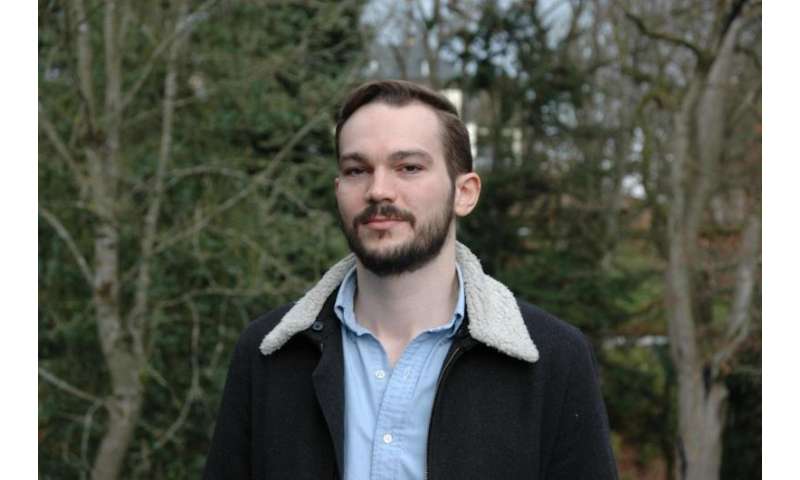Simulating the death of stars

Humboldt Fellow Samuel Jones (University of Victoria, Canada) is exploring the evolution and the explosion of stars by means of highly sophisticated computer simulations in order to gain new insights into the birth of neutron stars and the origin of the chemical elements. His research stay at the Heidelberg Institute for Theoretical Studies (HITS) is supported by the Alexander von Humboldt foundation.
Since May 2015, Dr. Samuel Jones (University of Victoria, Canada) has been working at the Heidelberg Institute for Theoretical Studies (HITS) as a visiting scientist. The Alexander von Humboldt foundation awarded Dr. Jones a Humboldt Research Fellowship for two years. This allows him to carry out a research project with an academic host in Germany. Samuel Jones was invited by Prof. Friedrich Röpke, head of the Physics of Stellar Objects (PSO) research group. He will stay at HITS until April 2017, investigating the evolution and explosion of stars whose chemical imprint is postulated to be stamped on some of the oldest stars in the Universe.
Born near Birmingham, Samuel Jones studied astrophysics and music technology at Keele University, UK. After his Ph.D. in 2014, he assumed a Postdoc position at the University of Victoria, Canada, in the group of Dr. Falk Herwig. Samuel Jones is one of the Principal Investigators of "NuGrid", a group of more than 50 astrophysicists from 21 institutions in 8 countries working on stellar evolution, supernovae, and nucleosynthesis.
At HITS, he is a visiting scientist in the Physics of Stellar Objects (PSO) group led by Friedrich Röpke. "The collective expertise of Fritz and the group provides the optimal setting in which to take on some of the unsolved problems in stellar physics", he says. Jones investigates the so-called "light massive stars". These are stars that are 8 to 12 times more massive than our Sun. "It is not clear if they turn into neutron stars or into white dwarfs … or neither", Jones explains. Having modeled their lives from the cradle to their dying moments, he is now turning his attention to their final few seconds. In his project, Jones is using the LEAFS (Level-set based Astrophysical Flame Simulations) code co-authored by Friedrich Röpke. "It´s multi-scale multi-physics", he explains. "The time scales of interest in stellar evolution range from millions of years to the order of seconds, and the spatial scales from a few hundreds of millions of kilometers to the sub-centimeter." This research aims to help stellar physicists to understand better the origin of neutron stars and the abundances of the chemical elements in the oldest stars that we know of.
Provided by Physics Institute, Heidelberg University